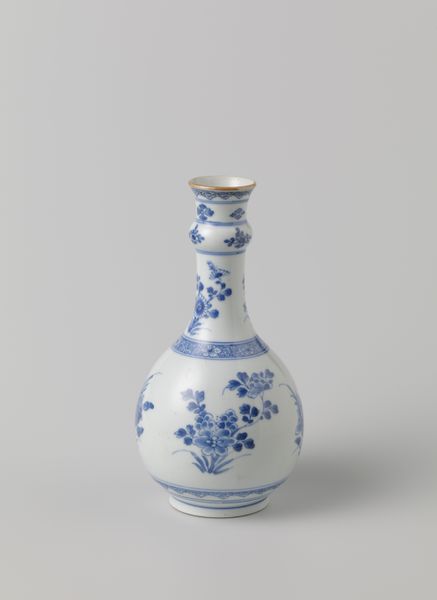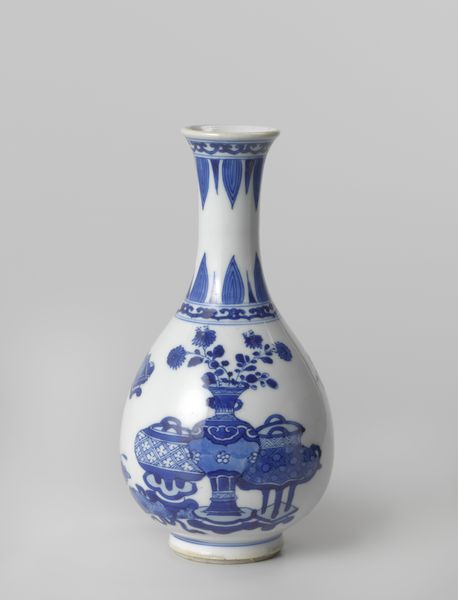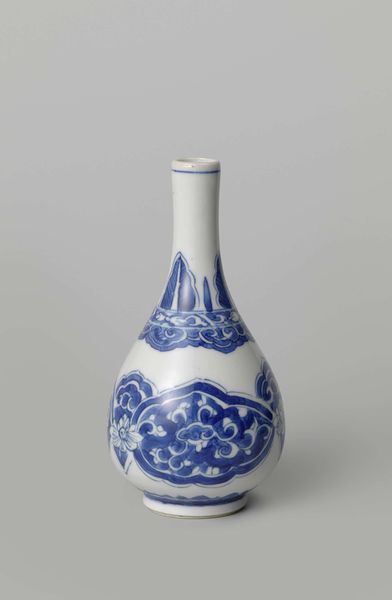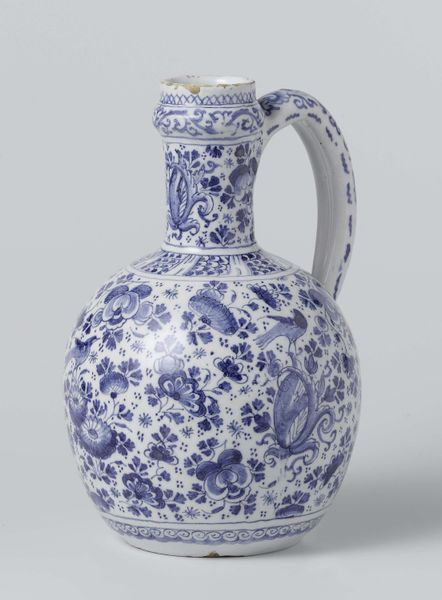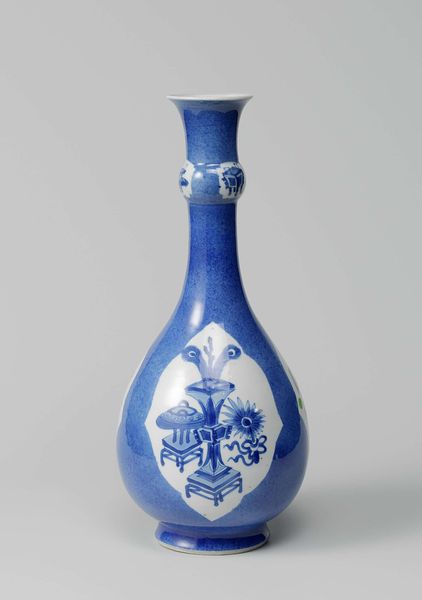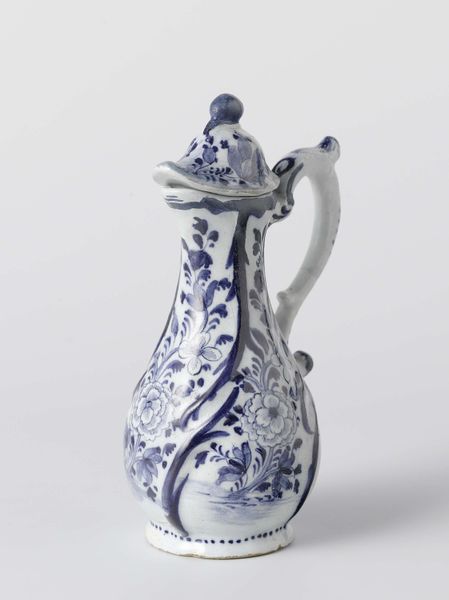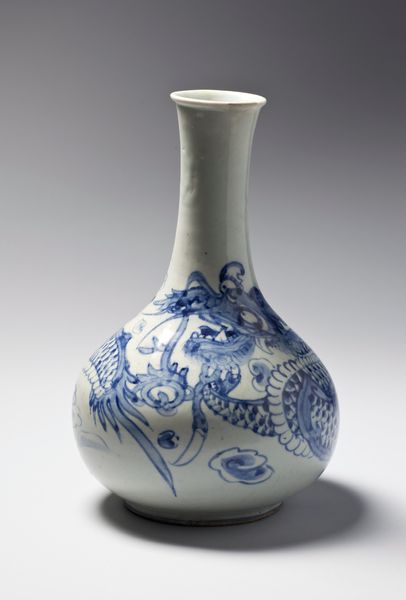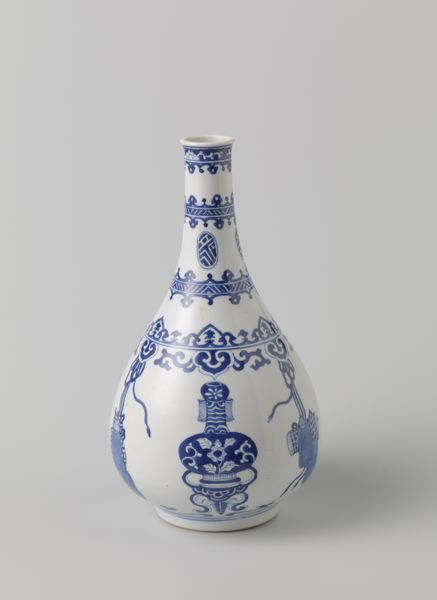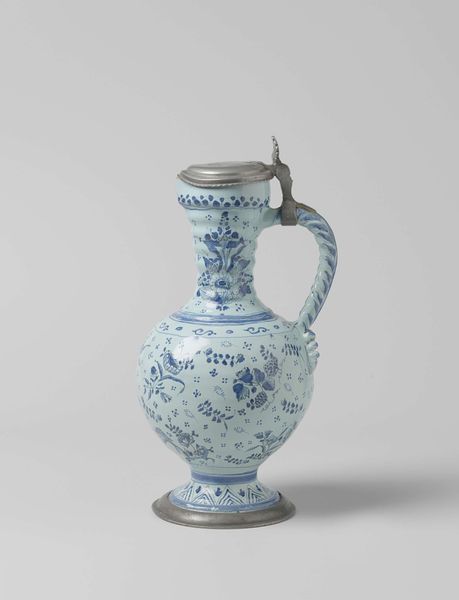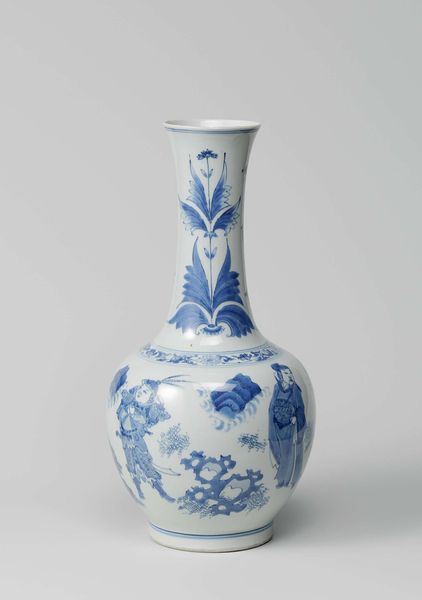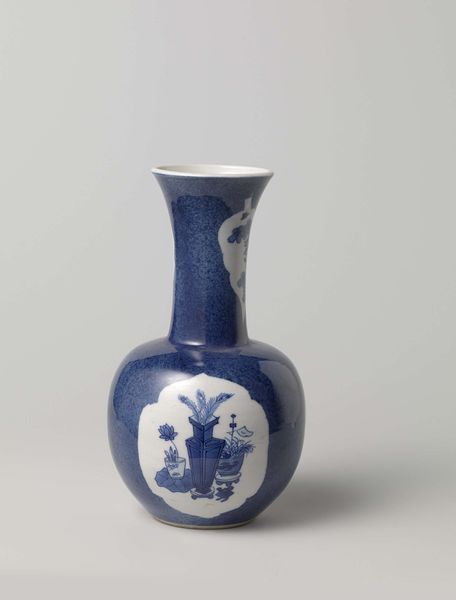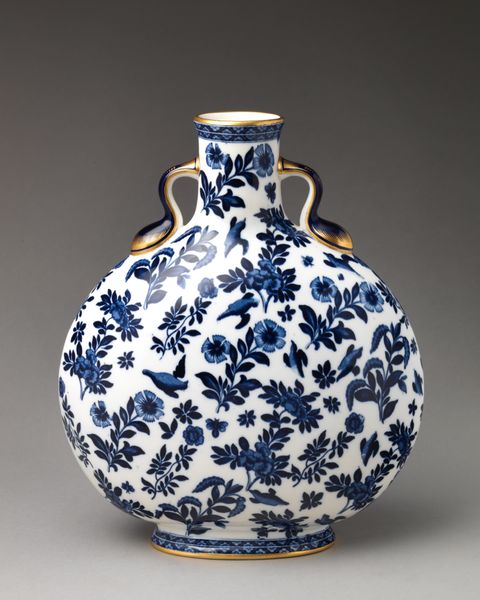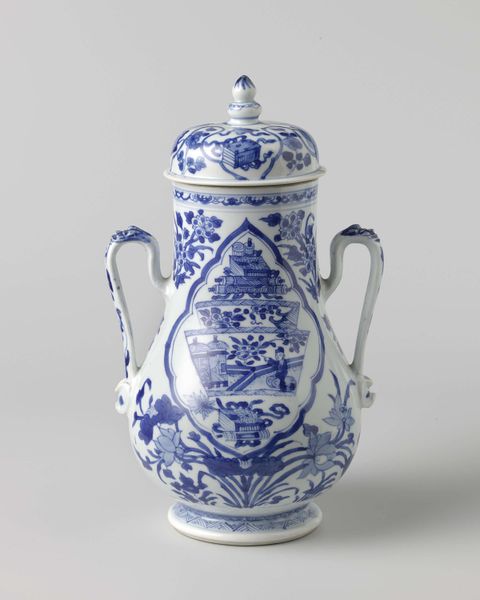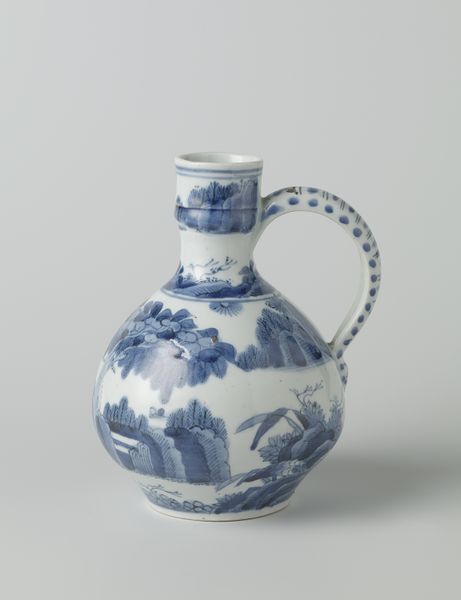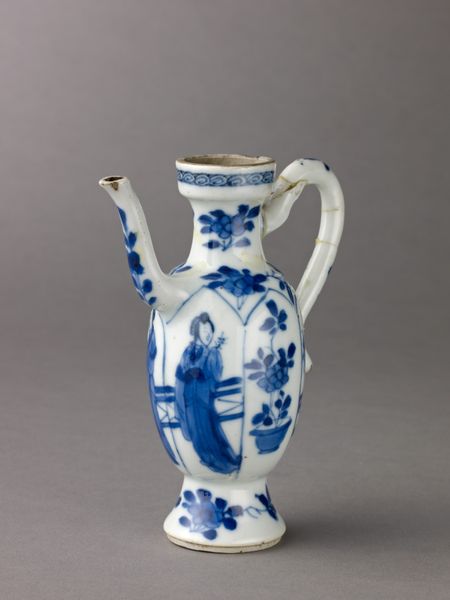
ceramic, earthenware
#
dutch-golden-age
#
ceramic
#
earthenware
#
orientalism
#
decorative-art
Dimensions: height 23.5 cm, width 7.8 cm, depth 7.5 cm
Copyright: Rijks Museum: Open Domain
Editor: We're looking at a delightful Delftware candlestick, created sometime between 1880 and 1920. The cobalt blue floral patterns are intricate against the creamy white earthenware. There’s something so calming, yet ornamental, about it. What catches your eye when you see this piece? Curator: Well, first, it makes me think about how things aren’t always what they seem. At first glance, you might think, "Oh, pretty Delftware." But really, it's whispering about global trade, cultural exchange, and a little bit of appropriation, don’t you think? Editor: Appropriation? Curator: Sure. Think about the classic blue-and-white porcelain coming from China for centuries. Then, Dutch potters start mimicking that style, and suddenly it's *theirs.* It’s a slippery slope, culturally. This candlestick is Dutch, right? But it echoes far Eastern artistic traditions and craftsmanship. So much storytelling in a humble ceramic! Editor: I hadn’t considered that. So, it’s beautiful, but also raises questions about artistic origins and ownership? Curator: Exactly! Plus, the Orientalism tag hints at that exotic allure Europe found in Asian art at the time. I think of my grandma and how much she loved a specific vase, a vase like this... Makes you consider who gets to tell what stories through art, doesn’t it? What stories does *this* candlestick want to whisper to *you*? Editor: That’s…a lot to unpack from a candlestick. It's made me think a lot about cultural sensitivity in art. Thanks! Curator: My pleasure! Isn't it amazing how one small piece can open up such big conversations? It's why I love art!
Comments
No comments
Be the first to comment and join the conversation on the ultimate creative platform.
